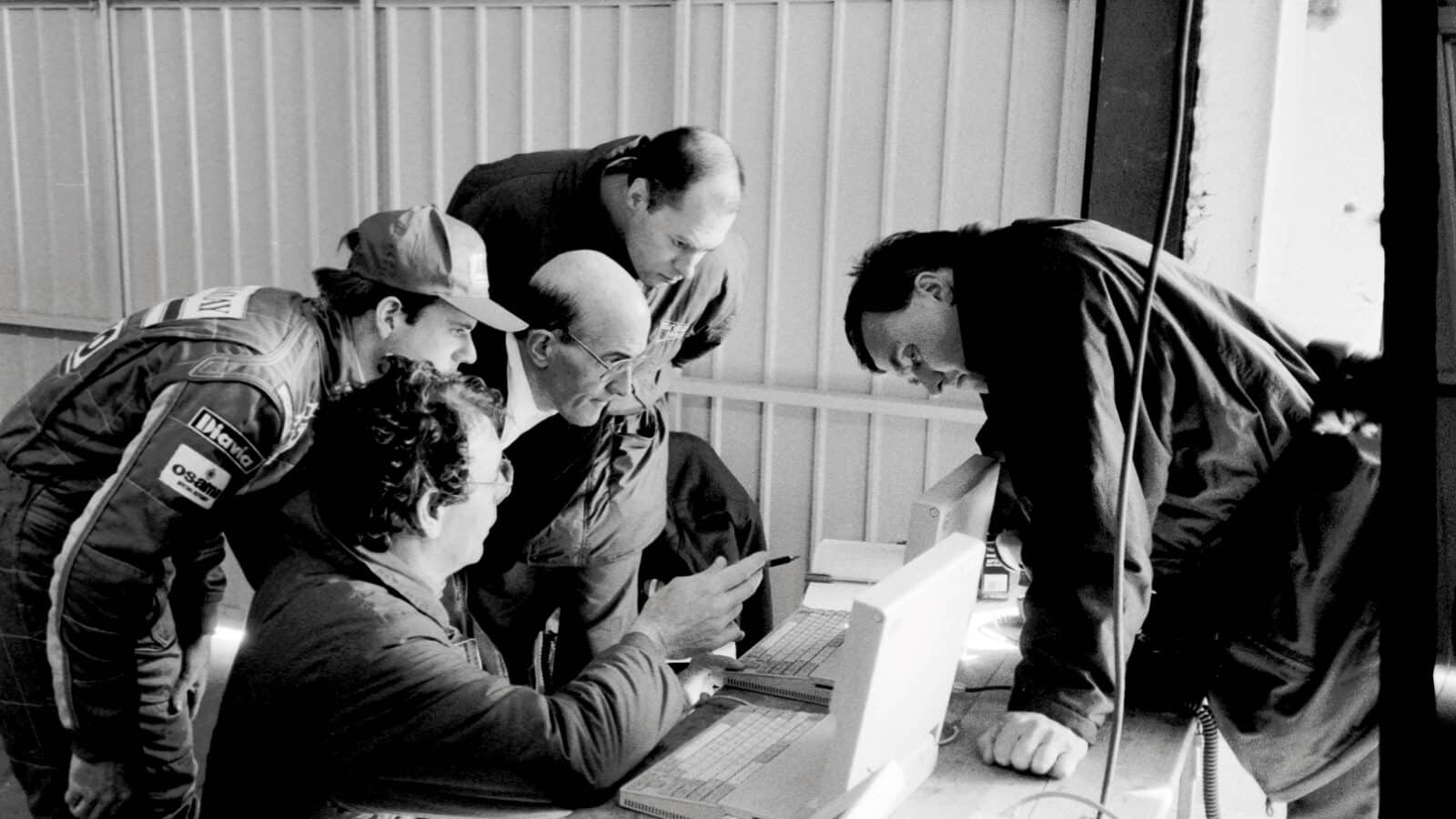Flashback: Jordan’s 1993 F1 telemetry analysis — two laptops
It’s a rewind to 1993 where Maurice Hamilton witnesses the vast tech and staffing differences between Jordan and Williams

When Formula 1 teams carried out pre-season tests in Bahrain recently, there would have been more people monitoring progress from the factories than at the track. A limit on race personnel has led to an explosion in the numbers seated behind banks of computers in so-called mission controls at team HQs and in direct contact with the race track. A driver can barely change his mind these days without someone hundreds of miles away being aware of it – and passing on advice about how to offer technical counselling for the poor soul.
This picture shows the sum total of telemetry during a Jordan team test session in late January 1993. Two laptops. And that’s it. The wardrobe mistress at Red Bull Racing probably has twice as many today.
Gary Anderson, Jordan’s technical director, points out something of interest on the engine laptop. This being the first running of Brian Hart’s V10, its creator (with the bald pate, centre) is taking more than a passing interest. Rubens Barrichello looks over Hart’s right shoulder. Mark Smith, race engineer, is on Brian’s left while his assistant peers over the top. These were exciting times for Hart and a brave move by Eddie Jordan after a year spent struggling with the Yamaha V12.
Barrichello has just completed the first morning’s running, the information having been downloaded from the car and brought into a garage furnished only with a tea urn, fold-up chairs and this table. Hart’s focus is on the Brazilian having hit 13,280rpm at 190mph on a nasty bump at the end of Estoril’s main straight. Hart heard it from the pitwall. He had cringed, bearing in mind the 12,900rpm limit set as the maximum.
Williams– was spread across three adjoining garages. At one stage, Hart had taken a peep next door and been disappointed to see that the Renault engines were being prepared behind a partition. He did note, however, the array of screens and keyboards set up for 30 people to monitor the FW15 when on the move.
The contrast between the garages was like comparing a computer with an abacus. The result would eventually be the same; it would just take longer to get there. Hart reckoned that the £400,000 needed to provide the telemetry – and the truck necessary to carry it – could be better spent in an operation as financially restricted as his.
Williams-Renault would walk the constructors’ championship with 168 points. Jordan-Hart would rejoice over the three points finally won at the penultimate round in Japan. Different strokes for different folks
